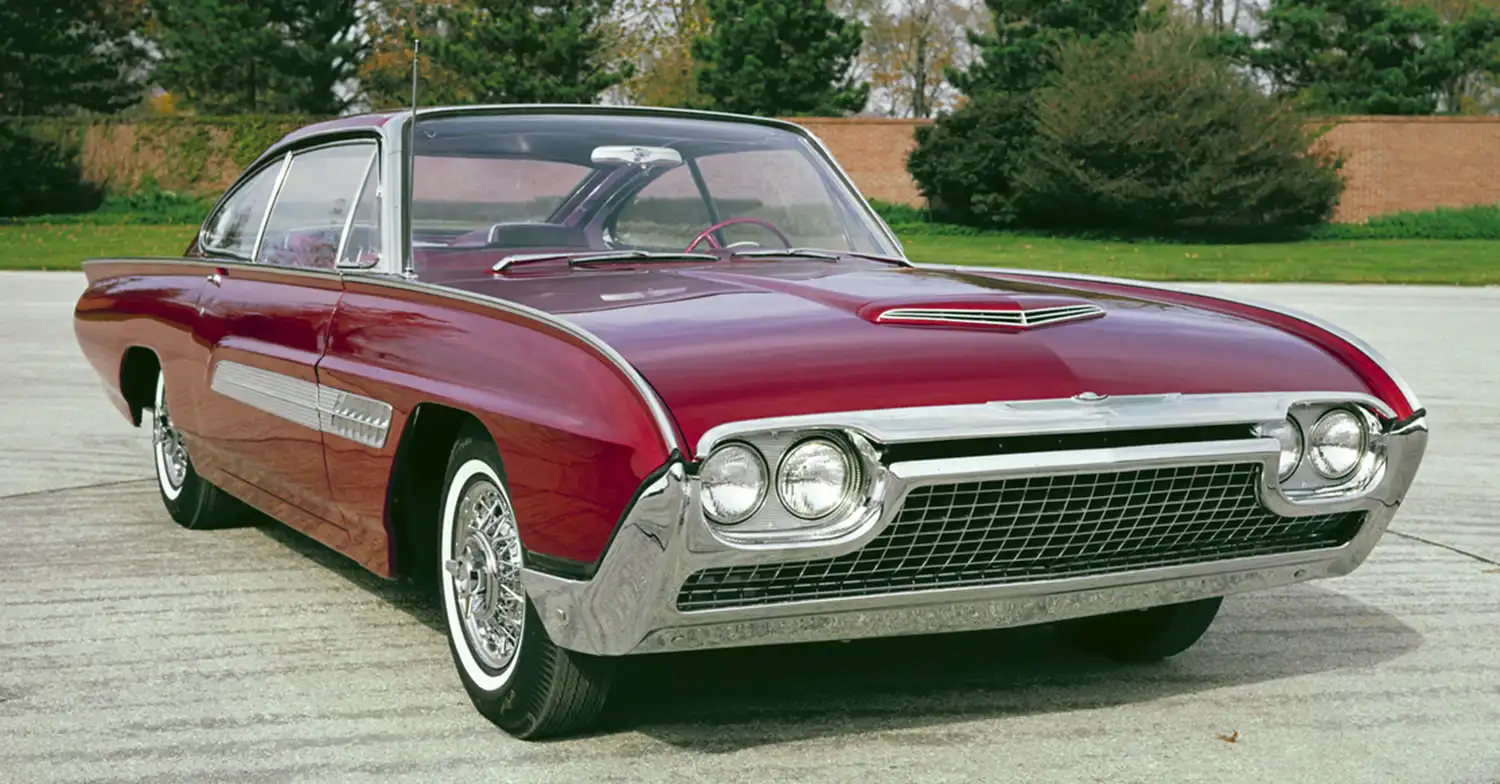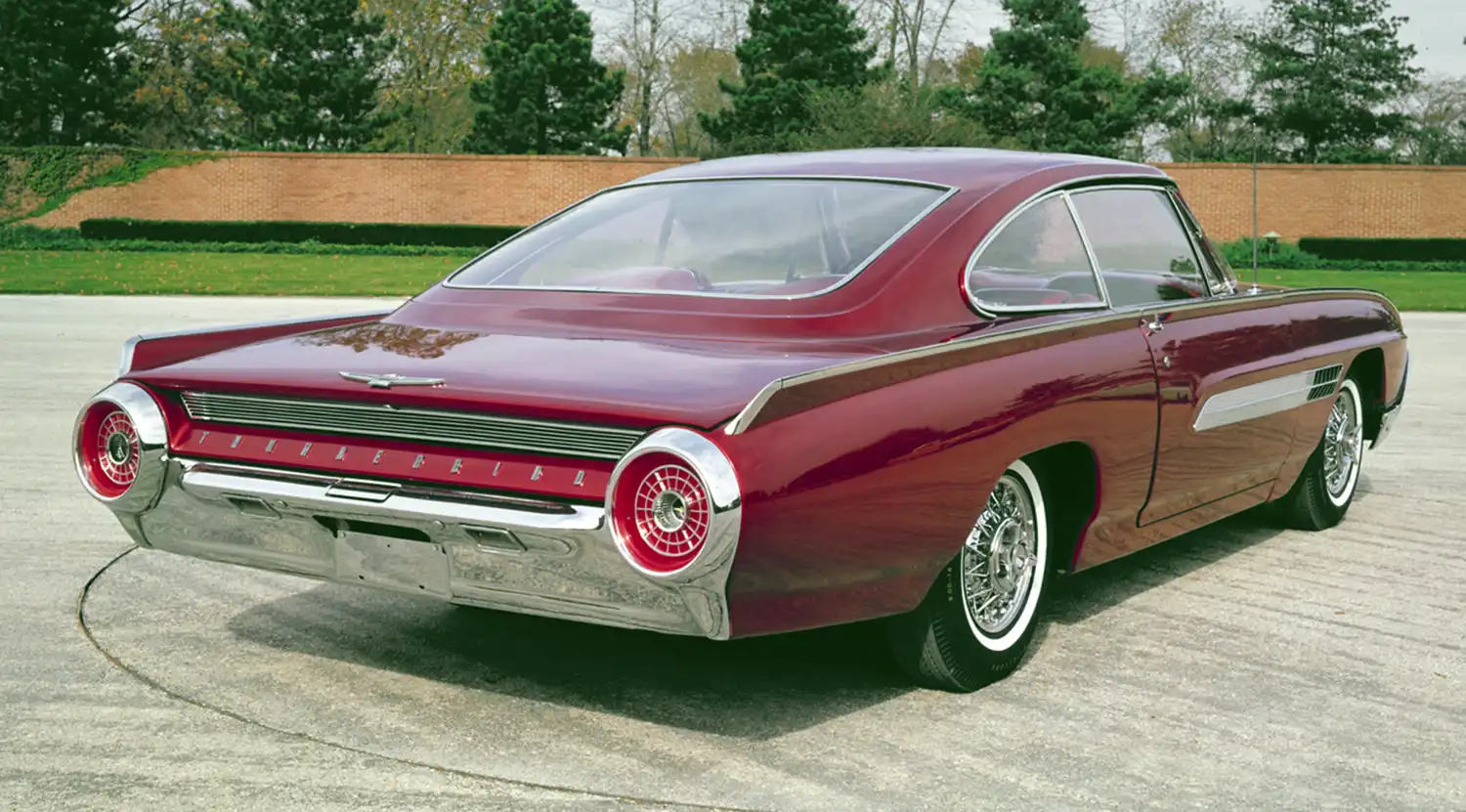
Sometimes, the most intriguing stories in automotive history aren’t about the cars that rolled off assembly lines in millions, but rather those rare, visionary creations that dared to dream beyond the ordinary. The 1963 Ford Thunderbird Italien concept car is precisely one such vehicle. It’s a remarkable fusion of American automotive prowess and exquisite Italian design, a true masterpiece that still captivates imaginations today. This unique concept offered a tantalizing glimpse into what the future of luxury and performance could hold.
Thunderbird’s Evolution Meets European Vision
The Ford Thunderbird, by 1963, was already a well-established icon of American personal luxury. Known for its distinctive “Bullet Bird” styling, it symbolized success and sophistication. However, the auto industry was constantly looking forward, experimenting with new ideas and collaborations. The 1963 Ford Thunderbird Italien was born from this spirit of innovation, a special project designed to showcase a more refined and European-influenced interpretation of the classic Thunderbird. It represented a fascinating departure from the standard production model.
The Genius of Ghia’s Touch
The magic behind the 1963 Ford Thunderbird Italien concept lies in its collaboration with Carrozzeria Ghia. The renowned Italian design house took the existing Thunderbird platform and reimagined its bodywork with a distinctly European flair. Gone were some of the production car’s heavier lines, replaced by a sleeker, more aerodynamic profile. The result was a harmonious blend of American muscle and Italian elegance, a testament to cross-cultural design synergy. Its lines were fluid and graceful, hinting at speed even when standing still.
Exterior: A Symphony of Curves
The exterior of the 1963 Ford Thunderbird Italien was a masterclass in automotive sculpture. Its most striking feature was the gracefully sloping fastback roofline, a significant departure from the production Thunderbird’s more formal silhouette. The car featured a unique grille treatment and revised front fascia, giving it a more aggressive yet sophisticated face. The rear end was equally distinctive, often incorporating a more integrated bumper design and unique taillight treatment. Every curve and panel seemed meticulously crafted, transforming the familiar Thunderbird into something truly exotic.
Unique Details and Proportions
Beyond the major design changes, numerous subtle details set the Thunderbird Italien apart. Its lower stance and wider track gave it a more planted, performance-oriented presence. The absence of traditional B-pillars, a feature popular on hardtops, contributed to its sleek, uninterrupted profile. Even the choice of wheels and tires would have been carefully selected to complement its refined aesthetic. This design spoke volumes about aspirations for a more globally appealing Ford luxury car.
A Visionary Interior
Inside, the 1963 Ford Thunderbird Italien concept was as revolutionary as its exterior. The cabin was designed to be a luxurious and driver-focused environment. While specific details can be elusive for concept cars, it’s clear the interior would have featured premium materials, possibly unique upholstery, and advanced instrumentation for its time. The aim was to create an exclusive space, elevating the personal luxury experience even further.
Combining Comfort with Forward-Thinking Design
The seating would have been designed for maximum comfort, reflecting the grand touring aspirations of the car. The dashboard likely integrated controls and displays in a futuristic manner, showcasing technological advancements. Every element, from the steering wheel to the door panels, would have contributed to an ambiance of bespoke craftsmanship and forward-thinking design. This concept truly aimed to push the boundaries of automotive interior luxury and ergonomics.
Powering the Dream Machine
While the focus of the 1963 Ford Thunderbird Italien was undoubtedly its groundbreaking design, it would have been powered by the contemporary Thunderbird mechanicals. This means it would have likely featured Ford’s potent 390 cubic inch FE V8 engine. In production Thunderbirds of the era, this engine produced approximately 300 horsepower and a substantial 427 lb-ft of torque. This provided ample power for effortless cruising and spirited performance.
Underneath the Exquisite Coachwork
The robust engine would have been paired with Ford’s reliable Cruise-O-Matic automatic transmission, ensuring smooth power delivery. The underlying chassis would have been the same sturdy unibody platform as the production Thunderbird, providing a solid foundation for the custom coachwork. While the concept car might not have been extensively tested for ultimate performance, its mechanicals assured it was more than just a showpiece. It possessed the underlying muscle to back up its stunning looks.
The Italien’s Enduring Legacy
The 1963 Ford Thunderbird Italien concept car never saw mass production, remaining a unique, one-off creation. However, its influence is undeniable. It demonstrated Ford’s willingness to experiment with bold design directions and collaborate with international coachbuilders. It symbolized a potential future where American power met European elegance. Today, the 1963 Ford Thunderbird Italien stands as a powerful testament to the boundless creativity within the automotive world, a cherished piece of history that continues to inspire.
Disclaimer: This article provides general historical information about the 1963 Ford Thunderbird Italien concept car. Details on concept vehicles can be limited and may be subject to interpretation.
Source: Ford Heritage Vault
